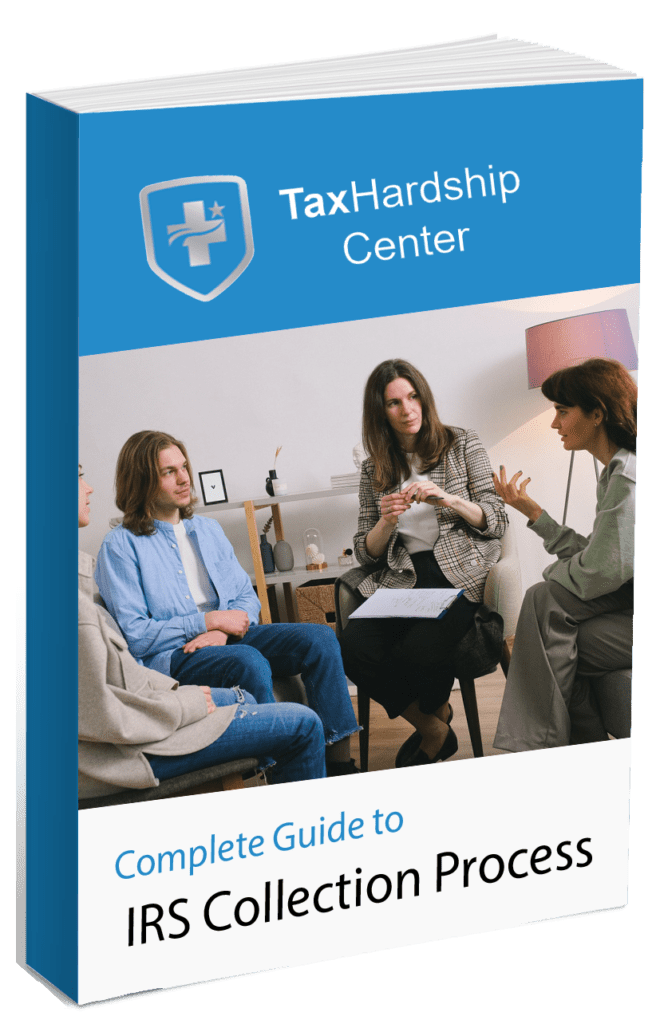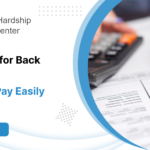
IRS Tax Levy: Everything You Need to Know
- Home
- Tax Blog
- IRS Tax Levy: Everything You Need to Know

IRS Tax Levy: Everything You Need to Know
No one ever wants to hear the words “IRS Tax Levy.” It’s a scary term that often sends chills down people’s spines. Without proper guidance, you may feel like you’re facing a daunting and impossible task.
However, many people who face an IRS Tax Levy actually don’t have to worry as much as they think. But it’s still important to understand what an IRS Tax Levy is and how it works.
In this article, we’ll answer all of those questions and more. We’ll discuss what a tax levy is, how it’s enforced, and the various ways you can try to stop or appeal one. We’ll also provide some tips on how to protect yourself from an IRS tax levy in the future. So whether you’re facing a levy right now or just want to be prepared for if one comes your way, read on for everything you need to know.

What Is an IRS Tax Levy?
The IRS can place a levy on your assets or property if you have unpaid taxes. This is a legal seizure of your property to compensate for your tax debt. Unlike a federal tax lien, which only claims your assets, the IRS opts to use a property tax levy in order to secure payment for the taxes you owe.
The IRS levy permits the government to take your assets if you’re unable to pay your tax debt, which could be rental income, retirement funds, wages, bank accounts, cars, and even your home.
How Does the IRS Levy Taxes?
The IRS will send you a tax bill if you have overdue taxes. If you don’t pay this bill, they’ll send an updated one. If you still can’t pay the final bill, the IRS will start taking collection actions, ranging from wage garnishments to asset seizures.
If you’re behind on your taxes, the IRS will first review your tax report. If they determine that you’re a candidate for a tax levy, they’ll send you a Notice and Demand for Payment. If you ignore or refuse this notice, the IRS will follow up with a Final Notice of Intent to Levý. At this point, you have 30 days to take action.
If you don’t do anything within those 30 days, The IRS will put a tax levy on your property. The IRS will send a Notice of Levy to your employer, financial institution, or anyone else who holds your assets.
After the IRS notifies you of your debt, they have a few options to choose from to collect the funds. Here are a few examples:
Wage Garnishment
Wage garnishment is a prevalent form of tax levy. Imagine if the government forced your employer to hold back a certain amount of your monthly pay and send it straight to the IRS until your tax debt is paid off. That’s wage garnishment! Your employer usually has one full pay period after receiving notice from the IRS before they have to start following through with the levy.
The wage garnishment levy will stay in place until the debt is paid off or you take action to remove it. If it’s your first time having your wages garnished, you are protected by the Consumer Credit Protection Act. The act stops employers from firing employees for their first wage garnishments.
Keep in mind that wage garnishments can be particularly difficult because they leave you with less money to live on each month, making it tough to handle other financial obligations.
Read the complete Wage Garnishment guide from experts here.
IRS Bank Levy
The IRS can also put a levy on your bank account, which gives them the legal right to take the money you have in your account to pay your tax debt. A bank levy will result in your bank sending a portion of the funds in your account, up to the total amount you owe, to the IRS.
The bank will usually freeze your account for 21 days after they receive the IRS notice. This gives you time to take action to get your money back or work out a payment plan with the IRS.
Certain types of income, such as social security and child support, are not subject to bank levies. Your financial institution can tell you which funds can be distributed to the Internal Revenue Service.
Property Seizure
Liens are placed on the property, such as your home or car, when you don’t pay your taxes. The lien gives the IRS a legal claim to your assets. The IRS will take your property and sell it to reduce the amount of money you owe. Sales are posted publicly for a minimum of 10 days, and you will be given notice of the sale.
After your debt has been paid off, the excess amount will be returned to you. Legal seizure of property is rare and only used for severe cases such as tax fraud or if you have ignored several notices to pay your tax debt.
Reduced Tax Refunds
If you are expecting a refund from the IRS, they may reduce your refund and put it towards the amount of taxes you owe. This is done to offset the amount of money you owe.
If the IRS plans to reduce your refund, they will send you a notice in the mail informing you of the offset and how much money will be taken from your refund.
If the IRS has already taken your refund, you can contact them to set up a payment plan or file an appeal if you believe the offset was done in error.
IRS Bank Levy
The IRS can also put a levy on your bank account, which gives them the legal right to take the money you have in your account to pay your tax debt. A bank levy will result in your bank sending a portion of the funds in your account, up to the total amount you owe, to the IRS.
The bank will usually freeze your account for 21 days after they receive the IRS notice. This gives you time to take action to get your money back or work out a payment plan with the IRS.
Certain types of income, such as social security and child support, are not subject to bank levies. Your financial institution can tell you which funds can be distributed to the Internal Revenue Service.
What Are the Consequences of a Tax Levy?
As the tax levy examples above show, the IRS has a lot of power when it comes to collecting money from taxpayers. Tax levies can be stressful and disruptive, making it difficult to maintain your normal lifestyle or take care of other financial obligations.
The IRS will send you several notices and demands for payment, including CP14, CP501, and CP503. If you don’t respond to these requests, the IRS will issue notice CP504 – intent to levy.
If you don’t take action after receiving a CP504 notice, expect to get a Final Notice of Intent to Levy and a Notice of Your Right to a Hearing about 30 days before the official levy is delivered. This notice will detail your rights to appeal the process and give you time to stop the levy before it takes effect.
If you don’t take action within 30 days, the IRS is allowed to collect the debt at any time. The IRS usually collects debts owed before other entities, like credit card companies or student loan providers.
The IRS can also take money from your paycheck each week or month. This process is called wage garnishment(we’ve discussed it above). It can be especially difficult because it leaves you less money to live on each month.
Your Credit Score Will Suffer
Seeing how much the IRS has taken out of your paycheck can be frustrating. Fortunately, a levy does not lower your credit score. If the IRS uses wage garnishment to collect on a levy, you won’t see it reflected on your credit report.
But indirectly, a tax levy can impact your credit score. This is because having a levy can make it difficult to pay other bills on time. If you’re struggling to make ends meet because of a levy, you may start to miss payments on other debts, like your mortgage or car loan. These unpaid bills will appear on your credit report by credit reporting agencies and can remain there for seven years.
How Can You Stop a Tax Levy From Happening?
Since a tax levy can majorly impact your finances, it’s important to take action as soon as you receive notice from the IRS. The sooner you take care of your tax debt; the less likely the IRS will levy your wages or property.
There are several ways to stop a tax levy from happening. You can:
Pay What You Owe in Full
This is the best option if you can afford to pay your tax debt in full. You have a few options when it comes to paying the IRS back. You can either sell some assets, borrow money from loved ones, or use part of your savings.
This may be the best route for you if you’re eligible for a loan with lower interest rates than the IRS charges. Once you’ve paid off your debt, the IRS will release the levy.
Installment Payment
If you’re unable to pay your taxes in full, you can arrange an installment payment plan with the IRS. To do so, you’ll need to complete and submit IRS Form 9465 along with your payment.
For a streamlined plan, your balance must typically be paid off within 72 months or less. The downside of this option is that you’ll be charged interest and may also be subject to a late payment penalty.
You can also consider direct debit installment agreement option.
Offer in Compromise
An offer in compromise (OIC) is an agreement between you and the IRS that allows you to settle your tax debt for less than the full amount owed. To qualify for an OIC, you must demonstrate that you cannot pay your full tax debt and that paying any amount would create financial hardship for you.
Currently Non Collectible (CNC) Status
If the IRS determines that you cannot pay any of your tax debt, they may place your account in Currently Non Collectible (CNC) status. This means that the IRS will not take any collection action against you for some time and will instead allow you to focus on getting back on your feet financially.
However, it’s important to note that interest and penalties will continue accruing on your outstanding balance during this time period.
Negotiate a Partial Payment Agreement
A partial payment agreement (PPA) is an agreement between you and the IRS that allows you to pay your outstanding tax debt over time. With a PPA, you agree to make regular payments until your debt is paid in full.
A partial payment agreement with the IRS is an option for those who would have trouble making regular installment payments. With a partial payment plan, you make reduced monthly payments on your tax debt. This helps you avoid financial hardship while satisfying the IRS and releasing levies.
The downside of a PPA is that interest and penalties will continue to accrue on your outstanding balance.
File for Bankruptcy
Filing for bankruptcy may allow you to discharge some or all of your outstanding tax debt. However, it’s important to note that not all types of taxes are dischargeable in bankruptcy. You should speak with an experienced bankruptcy attorney before taking this step.
How Can You Get Help if You Can't Pay Your Taxes?
Earning income brings with it the responsibility to pay taxes. However, if you find yourself in a situation where you can’t pay your taxes, know that you’re not alone.
If you owe money to the IRS and can’t pay your tax bill, don’t panic. There are options available to help you.
If you find the tax process confusing and frustrating, seek help from a tax professional. These experts will work with you until you receive the best possible resolution for your levies.
The tax professionals will review your financial records, as the IRS does, to confirm your debt. They will also inquire how much you can afford to pay monthly so that they understand what options are available to assist you.
The tax professionals will also negotiate with the IRS on your behalf to get a more manageable payment plan set up or waive your penalties.
It’s important to remember that the IRS is not going away, and they will continue to add interest and penalties to your bill if you don’t take action to address it.
FAQs
Many people think they are the same, but there is a big difference. A tax lien is a claim the IRS has on your property or assets and is given to you as security for the taxes you owe. An official letter is sent to you from the IRS asking for payment, and if you don’t comply, then the claim begins.
The IRS can initiate a tax levy if you have a tax lien and don’t pay. A tax levy is when the government seizes your property or assets to pay the tax lien. The IRS will take your money from your paycheck or bank account, or they may even seize your property.
A state tax levy is very similar to a federal tax levy. It’s a legal process that allows the state to collect unpaid taxes by taking money out of your bank account, seizing your assets, or garnishing your wages.
If the IRS can determine that the taxpayer is experiencing financial difficulties, they may release the tax levy. The taxpayer would then file an appeal to have the levy removed. Financial hardship can be caused by a job loss, high medical bills not covered by insurance, or damage to property from a natural disaster.
Here are the conditions that generally have to be met for the IRS to release a tax levy:
- The taxpayer has made some effort to pay the taxes owed.
- The taxpayer has set up a payment plan with the IRS.
- The taxpayer complies with all tax filings.
- The taxpayer can show that the levy is causing financial hardship.
- The expiration date for the collection process was before the IRS could issue a levy.
Although the IRS can garnish many types of income and assets, there are some Exemptions. These include things like wages, employee travel advances, commissions, payments from clients, money from bank accounts, property, including your home (in some instances), and rights to the property. Additionally, the IRS is allowed to take 15 percent of Social Security payments.
There are some things the IRS cannot take through a levy. These include public benefits like unemployment compensation and disability payments, need-based government benefits like food stamps and Temporary Assistance for Needy Families (TANF), and workers’ compensation payments.
If you disagree with the Notice of Intent to Levy, don’t worry–you have the right to appeal. Although it is rare, sometimes the IRS makes mistakes such as misplacing payments or mixing up paperwork. If this happens to you, simply call the phone number on the levy notice and follow the appeal process.
Final Thoughts
If you’re struggling to pay your taxes, several options are available to resolve tax liability and risk having a tax levy enforced against you. Before the IRS takes action, it’s essential to understand your rights and options to make the best decision for your situation. If you have any questions or concerns, speak with a qualified tax professional to determine which option is best for you under the circumstances.
Learn More About Your Tax Situation Today
Related Articles


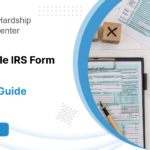

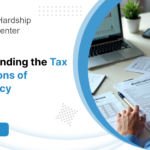
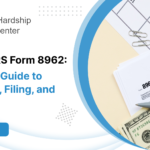
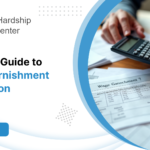
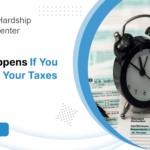
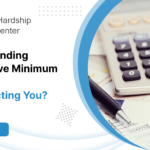

Have Any Question?
If you have any question related to our services, feel free to contact us right away and we will get back to you as soon as possible.

